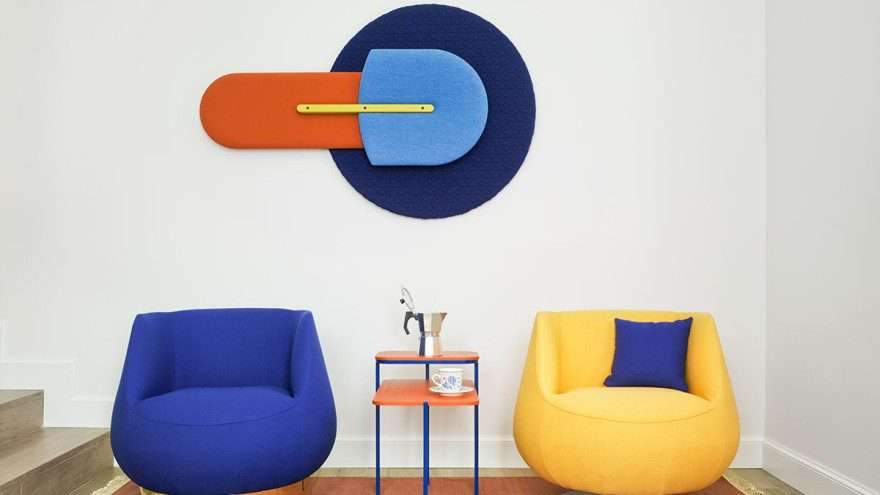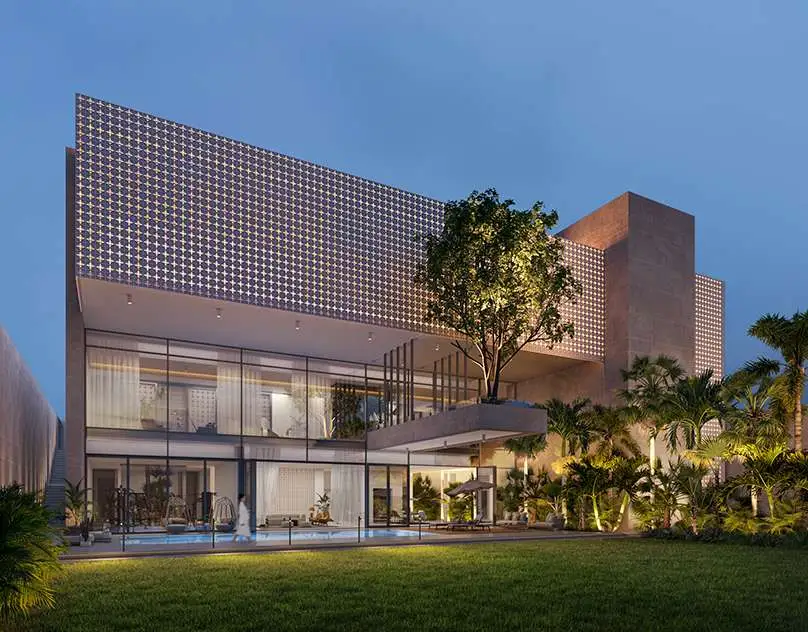
What affects the acoustic properties of a room?
Interior design for perfect room acoustics

Textiles and wall coverings
room dividers

acoustic furniture
For more architectural news




If you found this article valuable, consider sharing it
I am an architectural journalist and publisher interested in highlighting and presenting interior design best practices to my audience. I am always looking for new stories and ideas that will inspire my readers and enhance their lives

The Legacy of Anni Albers and Its Impact on Modern Design Anni Albers, one of the foremost textile artists of the twentieth century, left a profound mark on the field of modernism and design. Her contribution extended beyond traditional craftsmanship…

Throughout the past year, the Federal Reserve System and the Governing Council of the European Central Bank have continuously and gradually raised interest rates. As of February 8, the highest lending rate (key refinancing rate) in the euro area was…

Cities are crazy places, crowded with people of any kind coming from anywhere.Our new friends live in a big city, enjoying their lives in different ways, with their own singularities and differences.They were selected to be part of a portrait photography collection, showing the wild variety of people that populates the city.We could say that this is a…

Concept design for a stacking injection molded monobloc chair in recycled polypropylene. The idea was to create a “super clean” and simple silhouette that looked great from the back while offering comfort and ergonomics. The minimal aesthetics also help it fit multiple interiors without being polarizing.The seat surfacing and overall dimensions are close to production ready…

MONOLITHIC HOUSEwe are excited to share this truly amazing and unique project designed by Ahmed Habib. We created a series of imagesto bring this wonderful design to life, check out the images.Architect: Ahmed HabibVisualization: Omar Barghout & Mohamed AtefLocation: Jeddah, Saudi ArabiaTHANK YOU FOR WATCHING

Packaging___ 2021Limnos Wines ©Descriptive SymbolismLimnos Wines asked us to design the label for their aged white wine called Dryinos. In Greek, dryinos means something it is made from oak and is a reference from the oak barrels where the wine ages, a factor that defines its identity. As the oak barrel is the protagonist of it…

The Legacy of Anni Albers and Its Impact on Modern Design Anni Albers, one of the foremost textile artists of the twentieth century, left a profound mark on the field of modernism and design. Her contribution extended beyond traditional craftsmanship…

Throughout the past year, the Federal Reserve System and the Governing Council of the European Central Bank have continuously and gradually raised interest rates. As of February 8, the highest lending rate (key refinancing rate) in the euro area was…

Cities are crazy places, crowded with people of any kind coming from anywhere.Our new friends live in a big city, enjoying their lives in different ways, with their own singularities and differences.They were selected to be part of a portrait photography collection, showing the wild variety of people that populates the city.We could say that this is a…

Concept design for a stacking injection molded monobloc chair in recycled polypropylene. The idea was to create a “super clean” and simple silhouette that looked great from the back while offering comfort and ergonomics. The minimal aesthetics also help it fit multiple interiors without being polarizing.The seat surfacing and overall dimensions are close to production ready…

MONOLITHIC HOUSEwe are excited to share this truly amazing and unique project designed by Ahmed Habib. We created a series of imagesto bring this wonderful design to life, check out the images.Architect: Ahmed HabibVisualization: Omar Barghout & Mohamed AtefLocation: Jeddah, Saudi ArabiaTHANK YOU FOR WATCHING

Packaging___ 2021Limnos Wines ©Descriptive SymbolismLimnos Wines asked us to design the label for their aged white wine called Dryinos. In Greek, dryinos means something it is made from oak and is a reference from the oak barrels where the wine ages, a factor that defines its identity. As the oak barrel is the protagonist of it…

The Legacy of Anni Albers and Its Impact on Modern Design Anni Albers, one of the foremost textile artists of the twentieth century, left a profound mark on the field of modernism and design. Her contribution extended beyond traditional craftsmanship…

Throughout the past year, the Federal Reserve System and the Governing Council of the European Central Bank have continuously and gradually raised interest rates. As of February 8, the highest lending rate (key refinancing rate) in the euro area was…

Cities are crazy places, crowded with people of any kind coming from anywhere.Our new friends live in a big city, enjoying their lives in different ways, with their own singularities and differences.They were selected to be part of a portrait photography collection, showing the wild variety of people that populates the city.We could say that this is a…

Concept design for a stacking injection molded monobloc chair in recycled polypropylene. The idea was to create a “super clean” and simple silhouette that looked great from the back while offering comfort and ergonomics. The minimal aesthetics also help it fit multiple interiors without being polarizing.The seat surfacing and overall dimensions are close to production ready…

MONOLITHIC HOUSEwe are excited to share this truly amazing and unique project designed by Ahmed Habib. We created a series of imagesto bring this wonderful design to life, check out the images.Architect: Ahmed HabibVisualization: Omar Barghout & Mohamed AtefLocation: Jeddah, Saudi ArabiaTHANK YOU FOR WATCHING

Packaging___ 2021Limnos Wines ©Descriptive SymbolismLimnos Wines asked us to design the label for their aged white wine called Dryinos. In Greek, dryinos means something it is made from oak and is a reference from the oak barrels where the wine ages, a factor that defines its identity. As the oak barrel is the protagonist of it…